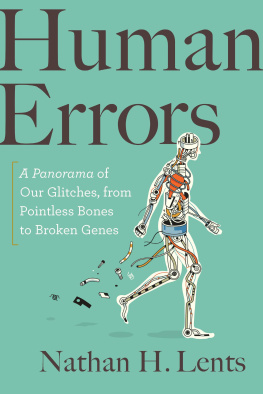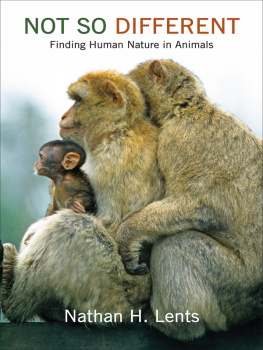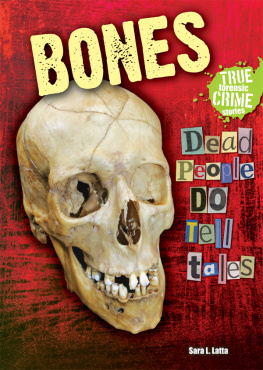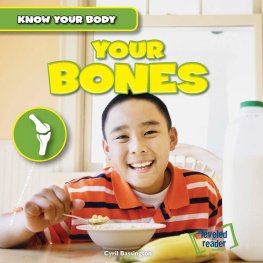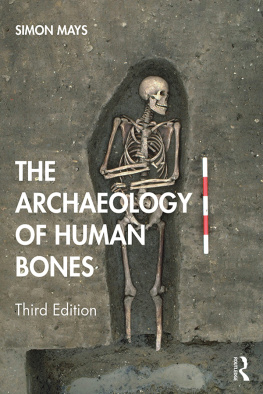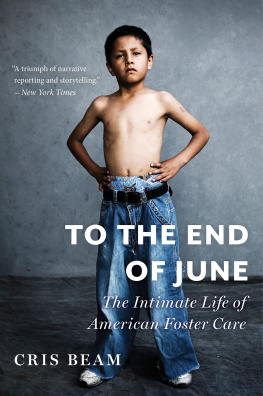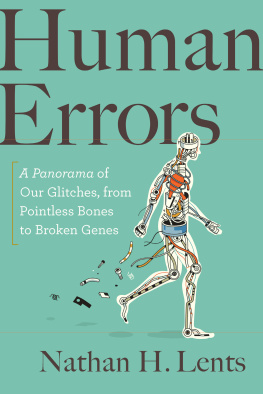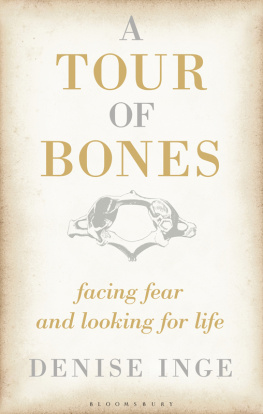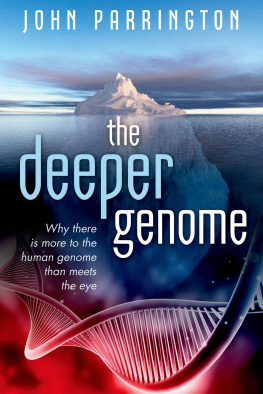Copyright 2018 by Nathan H. Lents
All rights reserved
For information about permission to reproduce selections from this book, write to or to Permissions, Houghton Mifflin Harcourt Publishing Company, 3 Park Avenue, 19th Floor, New York, New York 10016.
hmhco.com
Library of Congress Cataloging-in-Publication Data
Names: Lents, Nathan H., author.
Title: Human errors : a panorama of our glitches, from pointless bones to broken genes / Nathan H. Lents.
Description: Boston : Houghton Mifflin Harcourt, 2018. | Includes bibliographical references and index.
Identifiers: LCCN 2017046396 (print) | LCCN 2017057190 (ebook) | ISBN 9781328974693 (hardback) | ISBN 9781328974679 (ebook)
Subjects: LCSH : Human physiology. | Human evolution. | BISAC: SCIENCE / Life Sciences / Human Anatomy & Physiology. | SCIENCE / Life Sciences / Evolution. | SCIENCE / Life Sciences / Biology / General.
Classification: LCC QP34.5 .L467 2018 (print) | LCC QP34.5 (ebook) | DDC 612dc23
LC record available at https://lccn.loc.gov/2017046396
Illustrations by Donald Ganley/ Houghton Mifflin Harcourt
Charts Houghton Mifflin Harcourt
Cover design by Christopher Moisan
Cover illustration by Harry Campbell
Author photograph Arpi Pap at Pap Studio
v2.0518
Now, theres a topic you know a lot about!
My mother upon learning I was writing a book about human flaws
Introduction:
Behold the Blunders of Nature
Here is a story youve heard numerous times: Behold the incredible beauty, complexity, and greatness of the human body and its many systems, organs, and tissues! It seems that the deeper into our bodies we look, the more beauty we find. Like the layers of an onion, the cells and molecules that make up the human body have seemingly infinite levels of complexity. Human beings enjoy a rich world of the mind, perform astoundingly complex physical tasks, digest food material and then commingle it with their own matter and energy, effortlessly turn genes on and off, and every now and then produce whole new individuals in endless forms most beautiful.
Somehow, all of these processes come together to create the wondrous complexity of human life while allowing us to remain oblivious to the underlying mechanisms. A perfectly ordinary human can sit down and play Piano Man without ever having to think about the cells and the muscles of her hands, the nerves in her arms, or the brain centers where the information to play the piece are stored. A second human can sit and listen to the song without ever bothering to contemplate the vibrations of his eardrum, the conductance of nerve impulses to his auditory processing center, or the memory recall that allows him to belt out the refrain, however imperfectly. The song itself was composed by another such human (albeit an exceptional one), a person who I dare to suggest had little appreciation for the genes, proteins, and neurons that were hard at work as he did so.
Despite the fact that we often take them for granted, the capabilities of the human body are simply wondrousmiraculous even. So why not write a book about that?
Because youve heard about it many times. Those books have already been written. If you want a book about the glorious intricacy of the human body, you are in lucksimply walk into any medical library, and you will find tens of thousands of volumes. If you count biomedical journals, where new discoveries are announced, the number of accolades to the greatness of the human form rises into the tens of millions. There is no shortage of words and pages dedicated to how well the body usually works.
This is not that story. This is a story of our many flaws, from head to toe.
As it turns out, our flaws are extremely interesting and informative. By exploring human shortcomings, we can peer into our past. Each and every flaw discussed in this book tells a story about our species evolutionary history. Every cell, every protein, and every letter in our DNA code has been subjected to the harshness of natural selection over the fullness of evolutionary time. All of that time and all of that selection has resulted in a body form that is fantastically robust, strong, resilient, clever, and mostly successful in the great rat race of life. But it is not perfect.
We have retinas that face backward, the stump of a tail, and way too many bones in our wrists. We must find vitamins and nutrients in our diets that other animals simply make for themselves. We are poorly equipped to survive in the climates in which we now live. We have nerves that take bizarre paths, muscles that attach to nothing, and lymph nodes that do more harm than good. Our genomes are filled with genes that dont work, chromosomes that break, and viral carcasses from past infections. We have brains that play tricks on us, cognitive biases and prejudices, and a tendency to kill one another in large numbers. Millions of us cant even reproduce successfully without a whole lot of help from modern science.
Our flaws illuminate not only our evolutionary past but also our present and future. Everyone knows that it is impossible to understand current events in a specific country without understanding the history of that country and how the modern state came to be. The same is true for our bodies, our genes, and our minds. In order to fully grasp any aspect of the human experience, we must understand how it took shape. To appreciate why we are the way that we are, we must first appreciate what we once were. To twist the old saying a bit, we cant understand where we are now if we dont know where we came from.
Most of the human design flaws that I describe in this book fall into one of three categories. First, there are aspects of our design that evolved in a different world than the one we now inhabit. Evolution is messy and takes time. Our species tendency to gain weight easily and lose weight only with difficulty made very good sense in the Pleistocene savannas of Central Africa but not so much in a twenty-first-century developed nation.
The next category of flaws includes those of incomplete adaptation. For example, the human knee is the product of a redesign that took place as our ancestors gradually shifted from a quadrupedal posture and an arboreal lifestyle to a bipedal posture and a mostly terrestrial lifestyle. Most of the various components of the knee adapted very well to the new demands placed on this crucial joint, but not all of the kinks were worked out. We are almost fully adapted to upright walkingbut not quite.
The third category features those human defects that are due to nothing more than the limits of evolution. All species are stuck with the bodies that they have and they can advance only through the tiniest changes, which occur randomly and rarely. We inherited structures that are horrendously inefficient but impossible to change. This is why our throats convey both food and air through the same tiny space and why our ankles have seven pointless bones sloshing around. Fixing either of those poor designs would require much more than one-at-a-time mutations could ever accomplish.
A good example of the tremendous constraints of evolution even during episodes of great innovation is the vertebrate wing. Wings have been invented in many separate lineages. The wings of bats, birds, and pterosaurs all evolved separately and therefore have big structural differences. However, in all of those cases, the wing evolved from a forelimb. Those animals lost many uses of their forelimbs in order to get wings. Neither birds nor bats can grasp things very well. They have to crudely use their feet and mouths to manipulate objects. It would have been far better for those animals to grow wholly new wings while retaining their forelimbs, but evolution rarely works that way. For an animal with a complex body plan, growing new limbs is not an option, but slowly reshaping existing limbs is. Evolution is a constant game of tradeoffs. Most innovations come with a cost.

